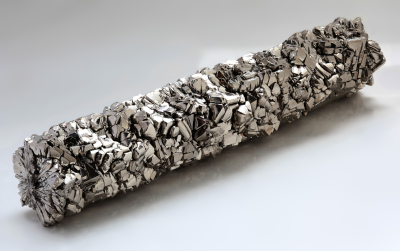
Step into the captivating realm of chemistry, where elements bear the names of legendary figures from myth and folklore.
Titanium
British mineralogist William Gregor made a significant discovery, in 1791, when he detected an unfamiliar metal in a black mineral known as menachanite. However, it was not named until four years later German chemist Martin Heinrich Klaproth independently identified the same metal in a different mineral called rutile. Upon learning about Gregor’s findings. Klaproth realised that the two metals were, in fact, the same. In honour of the Titans, a group of Greek deities known for their strength and power, Klaproth named the element "titanium." This name befits the metal perfectly, as it exhibits remarkable resistance to corrosion and possesses an impressive tensile strength, especially considering its low density.
Thorium & Cerium
Jons Jacob Berzelius, a Swedish chemist, made an exciting discovery while examining mineral samples from Norway and Sweden in 1815. He named this newfound substance thorjord, meaning "Thors earth," in honour of the powerful Norse god of thunder. However, further investigation revealed that thorjord was, in fact, yttrium phosphate, an existing compound. Nevertheless, Berzelius later had the opportunity to pay tribute to Thor once again when he successfully identified a new element, which he named thorium in the late 1820s. Berzelius had a penchant for bestowing mythological names upon elements, and his naming of cerium was no exception. In 1803, while working alongside his colleague Wilhelm Hisinger, Berzelius discovered a silvery rare earth metal. Inspired by the recent sighting of the asteroid (now considered a dwarf planet) Ceres, they named the element cerium after the celestial body. The name Ceres, in turn, originated from the Roman goddess associated with agriculture and abundant harvests. It is worth noting that the word "cereal" is also derived from the name of this goddess.
Vanadium
Vanadium was discovered in 1801 by the Spanish-Mexican mineralogist Andres Manuel del Rio. He found a new mineral in a lead ore from a mine near Zimapan, Mexico. Del Rio initially believed that the mineral was a form of chromium, and he named it "panchromium" due to its ability to exhibit various colours when oxidised.
However, in 1830, Swedish chemist Nils Gabriel Sefstrom rediscovered the element independently while working with iron ores. Sefstrom recognised that the mineral previously identified as panchromium was a distinct element and named it "vanadium" in honour of the Scandinavian goddess Vanadis (also known as Freyja) Vanadis was associated with beauty and fertility, which Sefstrom felt was appropriate due to the many vibrant colours exhibited by vanadium compounds.
Promethium
During the development of the atomic bomb as part of the Manhattan Project in World War II, American chemist Charles Coryell and his colleagues Lawrence E. Glendenin and Jacob A. Marinsky were involved in the identification of elements produced during nuclear fission of uranium. Surprisingly, they discovered an unknown rare earth metal during their research. Credit for the name of this radioactive element goes to Coryell's wife, Grace Mary. She proposed naming it after Prometheus, the Greek Titan who famously stole fire from the Olympians and gave it to humans. However, Prometheus faced severe consequences for his actions. He was bound to a mountain by Zeus, and every day an eagle would come to peck out his liver, which would then regenerate overnight. This punishment served as a reminder of the dangers associated with defying the gods.
When Glendenin described the name "promethium" in 1976, he explained that it not only symbolised the remarkable manner in which the element is created through the harnessing of nuclear fission energy but also served as a warning about the potential consequences and perils of engaging in war, as represented by the eagle punishing Prometheus.
Picture Credit : Google




